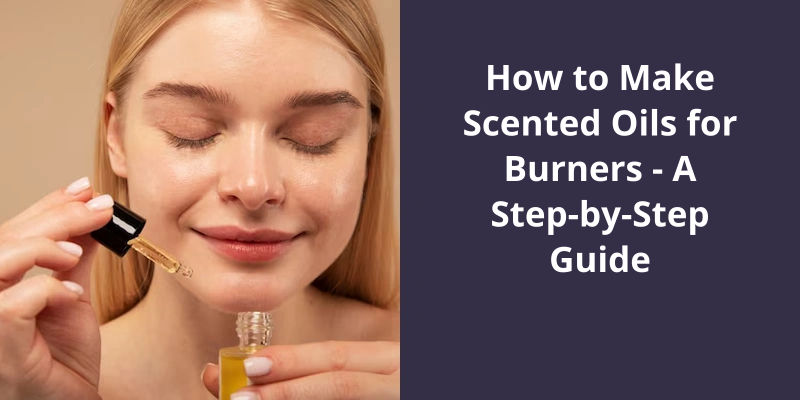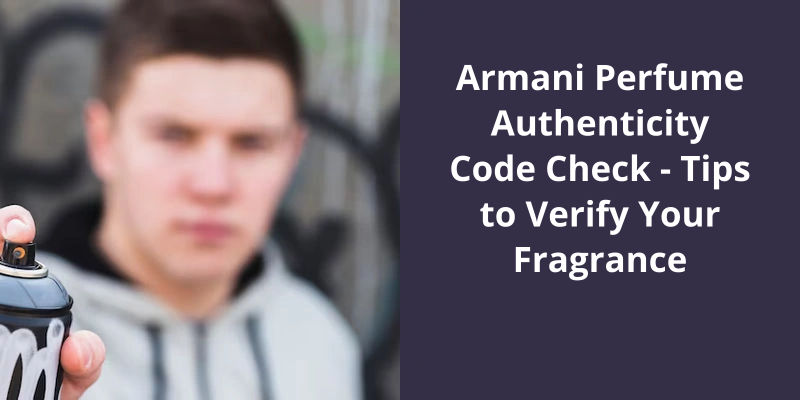To make scented oils for burners, first select the essential oils of your choice based on the scent you desire. Then take a carrier oil such as almond or grapeseed, and in a small container, mix together 1/4 cup of this carrier oil with 10-15 drops of the chosen essential oils. Remember to mix them well. For a stronger scent, you can add more drops of the essential oils. Once mixed, the scented oil is ready to be used in your oil burner. Always store any leftover oil in a cool, dark place to maintain the potency of the fragrance.

How Do You Fragrance Oil Burners?
Fragrance oil burners are a popular choice for creating a beautiful and soothing atmosphere in your home. They’re a simple and effective way to fill your space with a delightful scent that can instantly transform the ambiance. If youre wondering how to use fragrance oil in a burner, weve got you covered with this step-by-step guide.
First and foremost, it’s important to ensure the safety of your space. Place the burner on a fireproof surface, such as a ceramic plate or a stone coaster. This will prevent any accidental damage to your furniture or surfaces. Also, make sure to keep the burner out of reach for children and pets, as the hot tea light can pose a risk.
Next, youll want to have a jug of water handy next to your oil burner. This is essential for the burner to work effectively. The water acts as a medium to disperse the fragrance throughout the room. Fill the container of your burner with water, ensuring that it’s filled just below the rim. This will prevent any overflow when the water starts to heat up.
Once you’ve the water in place, it’s time to add your fragrance oil. Choose a scent that appeals to your senses and matches the mood you want to create. Add 3-5 drops of oil to the water in your burner. Be careful not to add too much, as an overwhelming scent may not be pleasant.
Now it’s time to light the tea light. Place the tea light in the holder at the base of the burner and carefully light it with a match or a lighter. Make sure to keep an eye on the open flame and never leave it unattended. The heat from the tea light will gradually heat the water, causing it to evaporate and disperse the fragrance into the air.
So go ahead, indulge in your favorite scents and transform your space into a fragrant sanctuary.
Adding Decorative Elements to Fragrance Oil Burners: This Could Suggest Creative Ways to Enhance the Aesthetics of Your Burner, Such as Using Dried Flowers, Decorative Stones, or Colored Water.
- Use of dried flowers
- Incorporating decorative stones
- Adding colored water
When it comes to using an oil burner, there are various options for the type of oil you can use. While some recipes suggest using di-propylene glycol, which can be conveniently purchased online, there are also more accessible and organic alternatives readily available. Oils like grapeseed, sweet almond, apricot kernel, and even sunflower oil from the grocery store can work just as effectively.
What Oil Can You Use in an Oil Burner?
When it comes to selecting the perfect oil for your oil burner, you’ve several options at your disposal. While some recipes for burner oils suggest using di-propylene glycol, which can be purchased online, there are other readily available and organic oils that you can use as well. Craft stores often carry oils such as grapeseed, sweet almond, and apricot kernel, which can be excellent choices for your burner. If youre looking for a more convenient option, you can even make use of sunflower oil readily available at the local grocery store.
Grapeseed oil is a popular choice among DIY enthusiasts due to it’s light and subtle aroma. With it’s high smoking point, grapeseed oil is perfect for use in burners as it won’t produce unpleasant odors or smoke when heated. Similarly, sweet almond oil is another versatile option that can enhance the aromatic experience. It’s mild and light, allowing the fragrance of essential oils to shine through without overpowering the room. Apricot kernel oil, on the other hand, imparts a delicate, fruity scent to your oil burner. It’s light texture makes it easy for the oil to be absorbed by the wick, ensuring a steady and long-lasting fragrance.
This oil is highly versatile and has a light, neutral scent that won’t interfere with the aroma of your chosen essential oils. It’s also budget-friendly, making it an excellent choice for those on a tight budget.
By selecting a high-quality carrier oil for your burner, you can ensure that the aromatic properties of your chosen essential oils are effectively released into the air, creating a beautiful and inviting atmosphere in your space. Experiment with different oils to find your perfect blend and enjoy the therapeutic benefits of scented oils in your burner.
Comparing the Benefits of Different Carrier Oils for Oil Burners
When it comes to making scented oils for burners, the choice of carrier oil is crucial. Different carrier oils have distinct properties that can enhance the overall scent and experience. Here are a few popular options and their benefits:
– Grapeseed oil: Known for it’s light texture and neutral scent, grapeseed oil is a popular choice. It’s easily absorbed and allows the aroma of the essential oils to shine through.
– Sweet almond oil: With it’s mild, slightly sweet aroma, sweet almond oil is another common carrier oil. It’s rich in vitamin E, which helps moisturize the skin, making it beneficial for aromatherapy massage.
– Jojoba oil: Jojoba oil closely resembles the sebum naturally produced by our skin. It’s deeply moisturizing and can help balance oil production. It’s neutral scent makes it a great choice if you want the fragrance of the essential oil to be the main focus.
– Coconut oil: Known for it’s solid state at room temperature, coconut oil needs to be melted before using it as a carrier oil. It’s a light tropical scent and is an excellent moisturizer, making it suitable for dry skin.
– Olive oil: A readily available option, olive oil isn’t just for cooking. It’s a strong scent, so it pairs well with powerful essential oils. However, it’s a heavier texture and may take longer to absorb into the skin.
Ultimately, the choice of carrier oil depends on personal preference and the desired effect. Experiment with different oils to find the perfect combination for your scented oils for burners.
Using an oil burner to diffuse perfume in your room can be a clever way to enjoy it’s pleasant scent, even if it doesn’t work well on your skin. By releasing the fragrance into the air, you can transform your space into a delightful oasis. Embracing this alternative usage allows you to fully appreciate the wonderful aromas locked within those bottles, creating an inviting atmosphere that lingers throughout the day.
Can You Put Perfume in an Oil Burner?
If you’ve perfumes that smell amazing in the bottle but don’t quite work for you when applied to your skin, theres a great alternative way to enjoy their scent – by putting them in an oil burner! This simple and effective method allows you to transform your room into a beautifully scented oasis without any concerns about how the fragrance might react with your skin. All you need is a few basic supplies and a little bit of time to create your own scented oils for burners.
To start, youll need a perfume or fragrance that you absolutely adore. Think about those bottles sitting on your shelf that you rarely reach for because the scent just doesn’t work well with your natural chemistry. Those are the perfect candidates for this project. Choose a fragrance that you think would create a pleasant atmosphere in your room.
First, gather your supplies. Youll need a carrier oil such as fractionated coconut oil, which is odorless and easily absorbs fragrance, ensuring a flawless diffusion in your oil burner. Youll also need a small glass bottle with a lid, a dropper, and of course, your chosen perfume or fragrance.
To begin the transformation process, fill the glass bottle about three-quarters full with the carrier oil. Then, take your chosen perfume or fragrance and add a few drops into the bottle. Start with just a few drops at first and adjust according to your preference for intensity. Gently swirl the mixture to ensure the perfume and carrier oil blend together harmoniously.
Now it’s time to transfer the scented oil mixture into your oil burner. Carefully pour the desired amount into the bowl of your burner, ensuring it doesn’t overflow. Light the tea light candle underneath the bowl and let it work it’s magic. As the heat causes the scented oil to evaporate, the fragrance will fill the room and create a delightful ambiance.
With this simple step-by-step guide, you can now transform those perfumes that don’t quite work on your skin into wonderfully scented oils for burners. Experiment with different fragrances to create ambiances that match your mood and preferences. Youll be amazed at how easily you can turn your room into a fragrant sanctuary with scents that previously seemed elusive. Enjoy the journey of exploring this alternative way to indulge in your favorite perfumes.
Using essential oils in an oil burner may result in the oils burning too quickly and producing a strong and overwhelming scent. Additionally, essential oils may not mix well with the wax in a burner and could potentially damage the burner or affect it’s performance. It’s best to use essential oils in diffusers specifically designed for that purpose, which will allow for safe and effective diffusion of the oils into the air.
Can You Put Peppermint Oil in Oil Burner?
How to Make Scented Oils for Burners: A Step-by-Step Guide
Peppermint oil is known for it’s refreshing and invigorating scent, making it a popular choice for aromatherapy and home fragrance. Many people wonder if they can put peppermint oil directly into their oil burners, and technically speaking, the answer is yes. However, there are a few important factors to consider.
Firstly, it’s important to note that essential oils are highly concentrated oil extracts from plants like lavender or eucalyptus. They’re potent and should be used with caution. On the other hand, wax melts for burners are made from paraffin or soybean wax blended with fragrance oil, which is typically less concentrated.
Firstly, essential oils are highly volatile and can evaporate quickly, which means you may need to frequently add more oil to your burner to maintain the scent. This can be both time-consuming and costly, as essential oils tend to be more expensive than fragrance oils.
Essential oils are highly concentrated and can be corrosive to certain materials, such as plastic or rubber. Fragrance oils, on the other hand, are specifically formulated to be safe for use in burners, candles, and other home fragrance products.
Source: Is it safe to use essential oils in an oil burner?..
When it comes to choosing the best oil for an oil burner, there are several essential oils that stand out. Lavender, eucalyptus, cinnamon, peppermint, lemongrass, frankincense, tea tree, and sandalwood are among the top choices. These oils not only fill the air with delightful scents, but they also offer a range of therapeutic benefits for relaxation, mood enhancement, and respiratory health. Discover the power of these essential oils and transform your space into a soothing sanctuary with your oil burner.
What Oil Is Best for Oil Burner?
When it comes to choosing the best oil for your oil burner, essential oils are often the top choice. These concentrated plant extracts not only fill your space with delightful scents, but they also offer a wide range of therapeutic benefits.
Lavender Essential Oil: Known for it’s calming and relaxing properties, lavender essential oil is perfect for creating a tranquil atmosphere in your space. It’s soothing scent can help promote better sleep and alleviate stress and anxiety.
Eucalyptus Essential Oil: If youre looking for a refreshing and invigorating scent, eucalyptus essential oil is a great choice. It can help clear the airways and relieve respiratory congestion, making it ideal for use during cold and flu seasons.
Cinnamon Essential Oil: With it’s warm and spicy aroma, cinnamon essential oil is perfect for creating a cozy and comforting ambiance. It can also help boost circulation and provide a natural energy boost.
Peppermint Essential Oil: The cooling and invigorating scent of peppermint essential oil can help improve focus and concentration. It’s also known for it’s ability to relieve headaches and soothe digestive issues.
Lemongrass Essential Oil: Known for it’s citrusy and uplifting scent, lemongrass essential oil can help reduce anxiety and promote mental clarity. It’s also a natural insect repellent, making it a great choice for outdoor burners.
Frankincense Essential Oil: With it’s earthy and woody aroma, frankincense essential oil is often used for meditation and spiritual practices. It can help calm the mind, promote deep relaxation, and enhance spiritual connection.
Tea Tree Essential Oil: If youre looking for a versatile oil that offers both cleansing and purifying properties, tea tree essential oil is a great option. It’s fresh and medicinal scent can help eliminate bacteria and airborne germs.
Sandalwood Essential Oil: The warm and rich scent of sandalwood essential oil is perfect for creating a peaceful and meditative atmosphere.
When using essential oils in your oil burner, it’s important to dilute them with a carrier oil, such as sweet almond oil or jojoba oil, to ensure safe and effective use. Simply mix a few drops of your chosen essential oil with the carrier oil, and then add the mixture to your oil burner. As the oil heats up, it will release it’s aromatic properties, filling your space with a delightful scent. Experiment with different combinations and ratios to find your favorite scent blend for your oil burner. Remember to always follow the instructions that come with your oil burner to ensure safe and proper use.
One popular way to create a pleasant fragrance for an oil burner is by blending your own personal scent. This allows you to customize the fragrance to your liking and create a unique aroma. To begin, mix your essential or fragrance oils together. Once you’ve blended your desired scent, it’s time to move on to the next step.
How Do You Make Oil Burner Fragrance?
Step 1: Blend a Personal Scent. Before you begin making scented oils for burners, it’s important to decide on the specific fragrance you want to create. Whether you prefer a floral, woody, or citrusy scent, start by blending your chosen essential or fragrance oils together in a small bowl. Experiment with different combinations until you achieve the desired aroma.
Step 2: Measure the Oils. Once you’ve your personal scent blend ready, it’s time to measure the carrier oil. In this case, you’ll need about 4 ounces of carrier oil. Common carrier oils used for scented oils include jojoba oil, almond oil, or even light olive oil. Pour the measured carrier oil into a separate mixing bowl to proceed to the next step.
To create scented oils for burners, youll need to add your blended fragrance or essential oil mixture to the carrier oil. Slowly pour the fragrance blend into the mixing bowl with the carrier oil, ensuring that the two oils are thoroughly combined. This step is crucial for distributing the scent evenly throughout the carrier oil.
Step 5: Store and Enjoy. Once the oils are blended, transfer the scented oil into a clean, airtight bottle or jar for storage. It’s essential to store the scented oil in a cool, dark place to preserve it’s fragrance. When youre ready to use your homemade scented oil, simply pour a small amount into the reservoir of your oil burner and light the candle beneath. Allow the fragrance to fill the room and enjoy the soothing, aromatic ambiance created by your personalized scented oil. Remember to always follow the instructions and safety precautions provided with your oil burner.
Different Types of Carrier Oils and Their Properties
- Almond Oil – Moisturizing, suitable for all skin types.
- Coconut Oil – Nourishing, great for dry and damaged hair.
- Grapeseed Oil – Lightweight, suitable for acne-prone and sensitive skin.
- Olive Oil – Hydrating, excellent for dry scalp and dandruff.
- Argan Oil – Rejuvenating, promotes hair growth and repairs damaged skin.
- Jojoba Oil – Balancing, ideal for oily and combination skin.
- Avocado Oil – Healing, beneficial for dry and mature skin.
- Rosehip Oil – Regenerating, reduces scars and fine lines.
- Castor Oil – Strengthening, aids in hair growth and moisturizes skin.
- Tea Tree Oil – Antimicrobial, helps with acne and fungal infections.
Conclusion
Remember to conduct thorough research on essential oil safety and dilution ratios to ensure a safe and enjoyable experience. With a few ingredients and a little creativity, you can elevate the atmosphere in your home by filling it with delightful fragrances that promote relaxation and well-being. So why not embark on this aromatic journey and bring a touch of personalized serenity to your surroundings with your very own homemade scented oils for burners?





